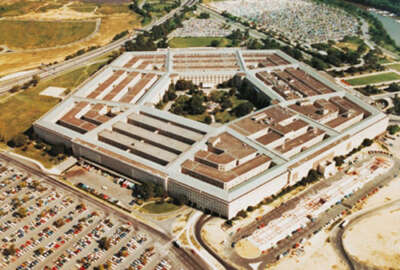
Marines are facing $1B shortfall in modernization needs
The military's focus on present operations is letting future readiness languish, Marine Corps and Army officials told Congress.
The Army and Marine Corps are forced to compromise infrastructure modernization and therefore future military readiness due to a lack of funding, officials told Congress Dec. 3.
Top military infrastructure officials said that the military services have had to defer infrastructure maintenance because the Defense Department has prioritized funds for other needs, jeopardizing long-term readiness.
“There are four things you need to generate readiness. You need airspace, you need land, you need IT infrastructure … and you need personnel,” said Army Maj. Gen. Patrick White of G3 Operations U.S. Army Forces Command, during a House Armed Services Subcommittee on Readiness hearing. “We’ve taken risk as an army over the past 10 years by pushing our resources into the direct readiness area, which happens to be operations tempo, and taking risk on infrastructure and facilities.”
In other words, the military is deploying frequently (operational tempo) and focusing on present readiness, but not investing in the readiness of the future.
“The Army’s installations are the power projection platforms enabling readiness and ensuring deployable combat forces, but what we’re seeing is the personnel tempo and the operational tempo is increasing, because of our decrease in number of soldiers that we do have as we go to 490 [thousand] and then to 450 [thousand],” Army Assistant Chief of Staff for Installation Management Lt. Gen. David Halverson said.
As the military has continued to focus on the now, responsibilities for the future have piled up.
“Within our sustainment accounts we’ve had to defer many requirements and many capabilities,” Commander of Marine Corps Installations Command Maj. Gen. Charles Hudson said. “The primary focus, of course, is to prepare for our forces to deploy now or tomorrow and we made an institutional decision to defer sustainment requirements to later on … that will result in the gradual degradation of our capability and over the long term that will cause the cost to increase dramatically.”
Hudson said the Marine Corps projects within the next five years a $1 billion bow wave of requirements that it will not be able to pay for due to reduced budgets or reduced top lines.
As a result, required training is being delayed due to a dearth of available ranges, harming the military’s readiness and essential infrastructure is degrading.
Ranges need to be maintained, there is pressure on current ranges to be modernized and there is the cost of future range development, Commander of 2nd Marine Division Maj. Gen. Brian Beaudreault told lawmakers.
Beaudreault said the Marines have buildings for urban warfare training, but not towns in which to put a large-scale unit for training. The Marines have recognized the urbanization that is happening in future warzones and Beaudreault said the money needs to be in place to build those training facilities.
While training facilities are an issue, other facilities are in need of modernization and maintenance.
“I have 68 barracks in the 2nd Marine Division that my Marines live in, 28 of which have been renovated or newly constructed,” Beaudreault said. “Forty of those remain. Under the current funding line it will take until 2034 to renovate the remainder of those barracks.”
One Army official said he is in charge of buildings that are more than 70 years old.
That’s not to mention the upgrades buildings need now that they rely more on technology.
Buildings are just as susceptible to cyber attacks as any other electronic platform. Not only can hackers get into things such as the heating, ventilation and cooling systems and electrical grids, but they can also access more critical infrastructures, compromising intelligence and safety.
John Conger, the acting assistant defense secretary for Energy, Installations and Environment said during a Nov. 17 speech that eventually DoD is going to have to invest real money into the cybersecurity of buildings.
That includes hiring technically savvy personnel that can do maintenance on buildings.
That poses a significant problem when DoD’s funds aren’t even covering what is needed to maintain bases and buildings.
Conger said DoD already is running risk with just basic building maintenance because it is underfunded.
It’s not looking like those modernization efforts will get funding anytime soon. DoD is facing a $17 billion deficit in 2017 due to the budget agreement and the President’s decision to keep troops in Afghanistan.
DoD Comptroller Mike McCord said during a Nov. 30 speech that modernization efforts will be taking the brunt of the cuts the department must make in 2017.
DoD Undersecretary for Acquisition, Technology and Logistics Frank Kendall also said during a Dec. 2 speech that modernization efforts would take a “disproportionate” cut in the 2017 budget.
Copyright © 2025 Federal News Network. All rights reserved. This website is not intended for users located within the European Economic Area.
Scott Maucione is a defense reporter for Federal News Network and reports on human capital, workforce and the Defense Department at-large.
Follow @smaucioneWFED




